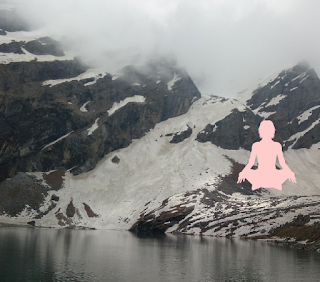Alzheimer's disease | How to control it | How yoga helps to prevent it | Meditation, asanas, pranayama and shat-karma
Alzheimer's disease named after Alois Alzheimer a German neurologist
who described the disease in 1906. Alzheimer's disease is a progressive form of
presenile dementia that are similar to senile dementia except that it usually
starts in the 40s or 50s. First symptoms are impaired memory which is followed
by impaired thought and speech and finally helplessness. More than four million
people in India suffer from some form of dementia and this number is growing at
an alarming rate. It is a brain disorder disease that impacts one’s ability to
think and remember; brain cell connection and the cells themselves degenerate
and die, the tissue has fewer and fewer nerve cells which results in memory
loss and other mind related issues. Alzheimer's disease destroys neurons and
its connection parts of the brain including the entorhinal cortex (A part of
the brain which, together with the hippocampus,
is important for memory functions), hippocampus as well as affecting the
cerebral cortex which is assigned for the work of language, reasoning and
therefore social behaviour being affected.
Hippocampus: complex neural structure
(shaped like a sea horse) consisting of grey matter, located on the floor of
each lateral ventricle; intimately involved in arousing an organism to action
toward a desired goal, and emotion as part of the limbic system (a system of
functionally related neural structures in the brain that are involved in
emotional behaviour); has a central role in the formation of memories.
Some symptoms of early-onset Alzheimer's disease are:
Frequent mood swings, impaired thinking, and disorientation which
led to withdrawal from work and other social situations.
Finding difficulties of a familiar place, speaking and misplacing
things and poor decision making and unable to speak properly.
Day times sleeping, while in the night, their sleep tends to be
uneven and disrupted.
Melatonin is a hormone
produced in the pineal gland of the
brain; and in fact, being responsible for regulating sleep cycles as it is to
be produced after sunset or during night, as two hours before a person goes to
sleep. So, for a sound sleep at night to be ensure adequate melatonin
production in the body. Uttan asana, Hal
asana, Sarvang asana, Padahast asana, Padam asana, Tad asana and shirsha asana:
these asanas can help the body to
produce melatonin, the growth hormone
and testosterone suitably.
Amygdala is an
almond-shaped neural structure in the anterior part of the temporal lobe (part
of the cerebral cortex in either hemisphere of the brain lying inside the
temples of the head) of the cerebrum; intimately linked with the hypothalamus
and the hippocampus and the cingulate gyrus (the cortical part of the limbic
system); as part of the limbic system it plays an important role in motivation
and emotional behavior.
The amygdala is
responsible for detecting fear, negative emotion, anxiety and preparing for
emergency events and plays a role in the conscious processing of emotions
particularly for the emotion of fear. The amygdala plays a part in sexual
activity and libido; with pituitary and pineal glands also giving support to
it. The amygdala provides the information of previous bad experiences which is
stored in the brain promptly, so that the brain can be more alert if such types
of incidences should occur again, then the amygdala can take precautionary
action. Over exhaustion of the amygdala is not beneficial to human and if fear
is continually increasing then one cannot live a normal life. Meditation
provides the way to get rid of fear and any bad emotion; in deep concertation
the amygdala comes back to its natural existence, because master gland enhances
during and controls the amygdala. Ten minutes of keeping in deep meditation is
equal to six hours of sound sleep and where oxygen consumption falls to its
lower level in meditation proved good results. Meditators gain sufficient prana
energy within chakras that result in transcending outer limitation and gaining
inner freedom and tranquility.
So, meditation,
asanas, pranayama, mudra and shat karma can prevent it, and also to be cured;
and, just need to spend 30 minutes a day for it.


Very nice
ReplyDeleteNice
ReplyDelete